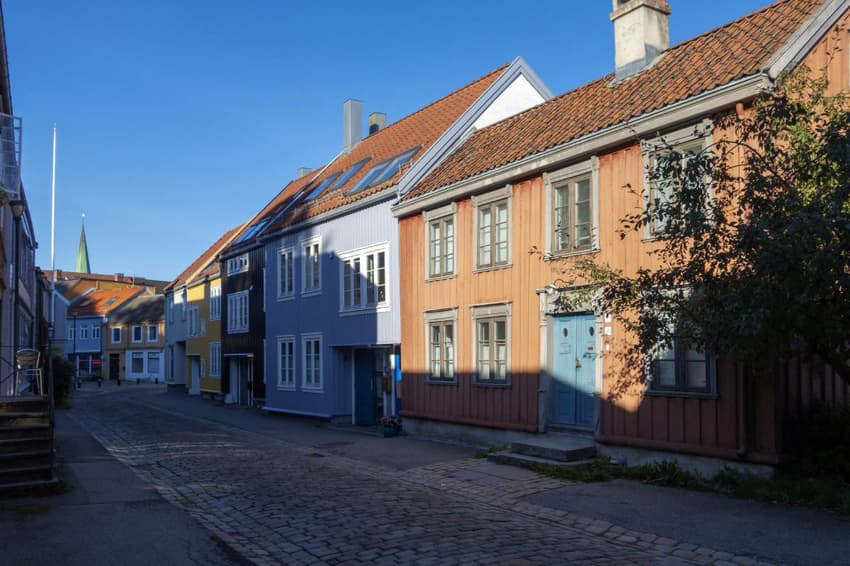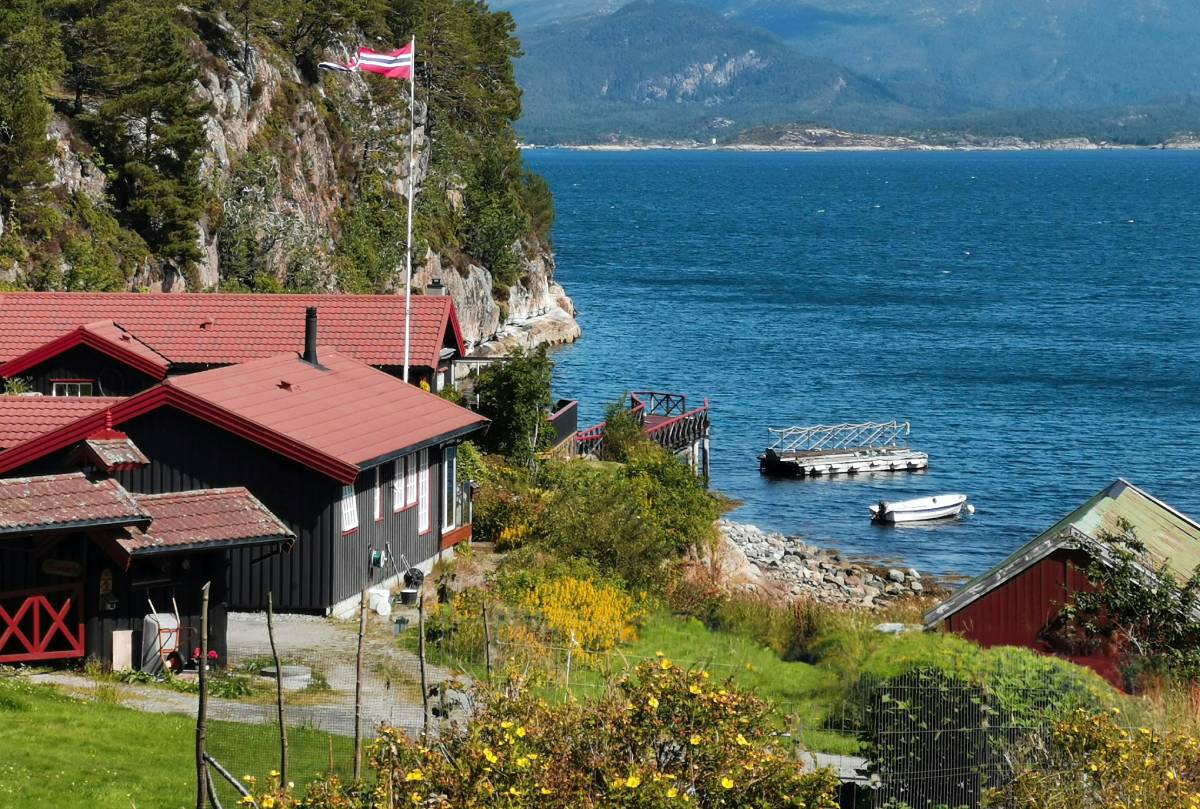The key numbers you need to understand Norway's property market

Trying to get your head around Norway's property market? From rental prices to home ownership stats, there are several key numbers that will help you make sense of it all.
Entering Norway's property market can be an exciting yet somewhat daunting experience for newcomers to the country.
Norway's unique housing model, characterised by a high homeownership rate and distinct regional variations (in rental rates and housing demand), adds another layer of complexity if you're new to it all.
Understanding the key property market figures is essential for making informed decisions – regardless of whether you're looking to buy, sell, or rent.
Rental prices in Norway
The average monthly rent for the entire country amounted to 10,620 kroner at the end of 2023, according to Statistics Norway (SSB) figures.
Generally speaking, you should expect to pay anywhere from 10,000 to 14,000 kroner a month to rent out a home in one of Norway's big cities, with differences stemming from the region you're looking at, the size of the apartment, centrality, and other factors.
READ MORE: Renting in Norway: The most common disputes between tenants and landlords
In Oslo Municipality and Bærum Municipality, the average monthly rent in 2023 was 13,850 kroner. In Bergen Municipality, western Norway, it stood at 10,440 kroner.
In Trondheim Municipality, central Norway, renters paid around 10,830 kroner a month, while in Stavanger Municipality, southern Norway, the average monthly rent amounted to 10,280 kroner.
2023 was a record year for rental prices in major Norwegian cities. Rent surged by 7.7 percent over 12 months, surpassing the previous record set in 2022.
This marked two consecutive years of historically high growth, with a cumulative increase of 15.2 percent since 2022.
An overview of property prices – and Norway's famous housing model
Contrary to the rental market, housing prices in Norway saw a more modest increase of 0.5 percent in 2023.
The average price for a home in Norway reached 4,218,068 kroner by December's end, according to the figures published by the industry organisation Real Estate Norway (Eiendom Norge).
READ MORE: A beginner's guide to buying a home in Norway
Haugesund, Kristiansund, and Kristiansand experienced the strongest growth, with increases of 5.7 percent, 5.1 percent, and 4.8 percent, respectively. On the other hand, Hammerfest and Kinn saw housing prices fall by 7 percent and 6.5 percent, respectively.
Homeownership is a cornerstone of Norwegian housing policy (in place since the 1950s), and almost 80 percent of the population owns their homes.
Rooted in the belief that homeownership fosters stability, community cohesion, and individual prosperity, this policy has shaped the fabric of Norwegian society for generations.

At the end of 2023, the average time to sell a home in Norway stood at 49 days. Pictured is a home in the Kristiansund area. Photo by Finn Schürmann on Unsplash
How long does it take to sell a home in Norway?
Typically, spring and early summer are peak periods for home sales in Norway.
As of December 2023, selling a home took an average of 49 days. During peak periods, homes spend an even shorter time on the market - down to around 35 days.
Homes are usually listed for 10-14 days before the first viewing, with bidding rounds often occurring the following day.
At the end of the fourth quarter in 2023, the number of homes for rent in major cities stood at 3,439, indicating a stabilisation compared to previous pandemic-related fluctuations in supply and demand.
Getting a mortgage in Norway – key requirements
In Norway, mortgage regulations state all the key requirements you need to meet to get a mortgage from a lender.
Firstly, there's a maximum loan-to-value (LTV) ratio of 85 percent. This means that lenders can provide mortgages covering up to 85 percent of the property's appraised value, necessitating a minimum down payment of 15 percent from borrowers.
READ MORE: What foreign residents in Norway need to know to get a mortgage
Secondly, borrowers must make a minimum yearly repayment of 2.5 percent of the loan amount if the loan-to-value ratio exceeds 60 percent. This provision aims to gradually reduce borrowers' debt burden over time.
Additionally, there's a maximum loan size restriction, capped at five times the borrower's gross income. This measure helps prevent borrowers from taking on excessive debt relative to their income levels.
Furthermore, lenders assess borrowers' affordability by ensuring their disposable income can cover all relevant costs associated with homeownership. Borrowers must also demonstrate the ability to withstand potential changes in mortgage rates, including a hypothetical three-percentage-point increase.
For foreign residents seeking mortgages in Norway, similar requirements apply as for Norwegian residents. However, there may be variations among major lenders regarding specific terms and conditions for international applicants.
READ MORE: Are Norway's mortgage requirements different for foreign residents?
For example, while most lenders typically require a down payment of around 15 percent for foreign residents, DNB, Norway's largest bank, may charge a higher down payment of 25 percent for international citizens.
Comments
See Also
Entering Norway's property market can be an exciting yet somewhat daunting experience for newcomers to the country.
Norway's unique housing model, characterised by a high homeownership rate and distinct regional variations (in rental rates and housing demand), adds another layer of complexity if you're new to it all.
Understanding the key property market figures is essential for making informed decisions – regardless of whether you're looking to buy, sell, or rent.
Rental prices in Norway
The average monthly rent for the entire country amounted to 10,620 kroner at the end of 2023, according to Statistics Norway (SSB) figures.
Generally speaking, you should expect to pay anywhere from 10,000 to 14,000 kroner a month to rent out a home in one of Norway's big cities, with differences stemming from the region you're looking at, the size of the apartment, centrality, and other factors.
READ MORE: Renting in Norway: The most common disputes between tenants and landlords
In Oslo Municipality and Bærum Municipality, the average monthly rent in 2023 was 13,850 kroner. In Bergen Municipality, western Norway, it stood at 10,440 kroner.
In Trondheim Municipality, central Norway, renters paid around 10,830 kroner a month, while in Stavanger Municipality, southern Norway, the average monthly rent amounted to 10,280 kroner.
2023 was a record year for rental prices in major Norwegian cities. Rent surged by 7.7 percent over 12 months, surpassing the previous record set in 2022.
This marked two consecutive years of historically high growth, with a cumulative increase of 15.2 percent since 2022.
An overview of property prices – and Norway's famous housing model
Contrary to the rental market, housing prices in Norway saw a more modest increase of 0.5 percent in 2023.
The average price for a home in Norway reached 4,218,068 kroner by December's end, according to the figures published by the industry organisation Real Estate Norway (Eiendom Norge).
READ MORE: A beginner's guide to buying a home in Norway
Haugesund, Kristiansund, and Kristiansand experienced the strongest growth, with increases of 5.7 percent, 5.1 percent, and 4.8 percent, respectively. On the other hand, Hammerfest and Kinn saw housing prices fall by 7 percent and 6.5 percent, respectively.
Homeownership is a cornerstone of Norwegian housing policy (in place since the 1950s), and almost 80 percent of the population owns their homes.
Rooted in the belief that homeownership fosters stability, community cohesion, and individual prosperity, this policy has shaped the fabric of Norwegian society for generations.

How long does it take to sell a home in Norway?
Typically, spring and early summer are peak periods for home sales in Norway.
As of December 2023, selling a home took an average of 49 days. During peak periods, homes spend an even shorter time on the market - down to around 35 days.
Homes are usually listed for 10-14 days before the first viewing, with bidding rounds often occurring the following day.
At the end of the fourth quarter in 2023, the number of homes for rent in major cities stood at 3,439, indicating a stabilisation compared to previous pandemic-related fluctuations in supply and demand.
Getting a mortgage in Norway – key requirements
In Norway, mortgage regulations state all the key requirements you need to meet to get a mortgage from a lender.
Firstly, there's a maximum loan-to-value (LTV) ratio of 85 percent. This means that lenders can provide mortgages covering up to 85 percent of the property's appraised value, necessitating a minimum down payment of 15 percent from borrowers.
READ MORE: What foreign residents in Norway need to know to get a mortgage
Secondly, borrowers must make a minimum yearly repayment of 2.5 percent of the loan amount if the loan-to-value ratio exceeds 60 percent. This provision aims to gradually reduce borrowers' debt burden over time.
Additionally, there's a maximum loan size restriction, capped at five times the borrower's gross income. This measure helps prevent borrowers from taking on excessive debt relative to their income levels.
Furthermore, lenders assess borrowers' affordability by ensuring their disposable income can cover all relevant costs associated with homeownership. Borrowers must also demonstrate the ability to withstand potential changes in mortgage rates, including a hypothetical three-percentage-point increase.
For foreign residents seeking mortgages in Norway, similar requirements apply as for Norwegian residents. However, there may be variations among major lenders regarding specific terms and conditions for international applicants.
READ MORE: Are Norway's mortgage requirements different for foreign residents?
For example, while most lenders typically require a down payment of around 15 percent for foreign residents, DNB, Norway's largest bank, may charge a higher down payment of 25 percent for international citizens.
Join the conversation in our comments section below. Share your own views and experience and if you have a question or suggestion for our journalists then email us at [email protected].
Please keep comments civil, constructive and on topic – and make sure to read our terms of use before getting involved.
Please log in here to leave a comment.